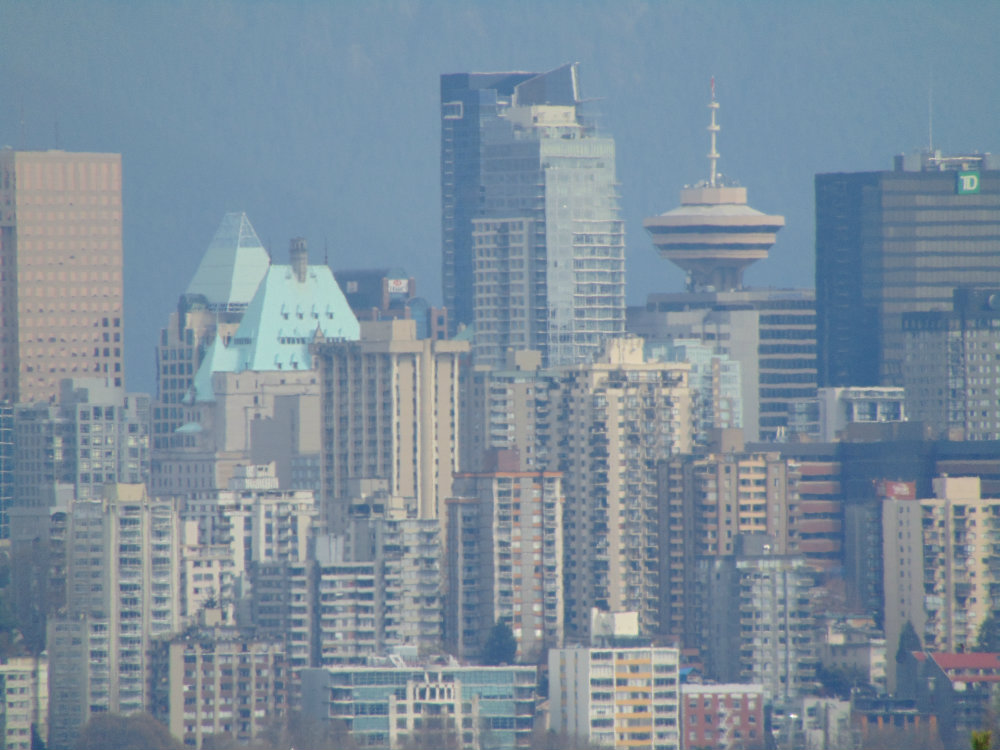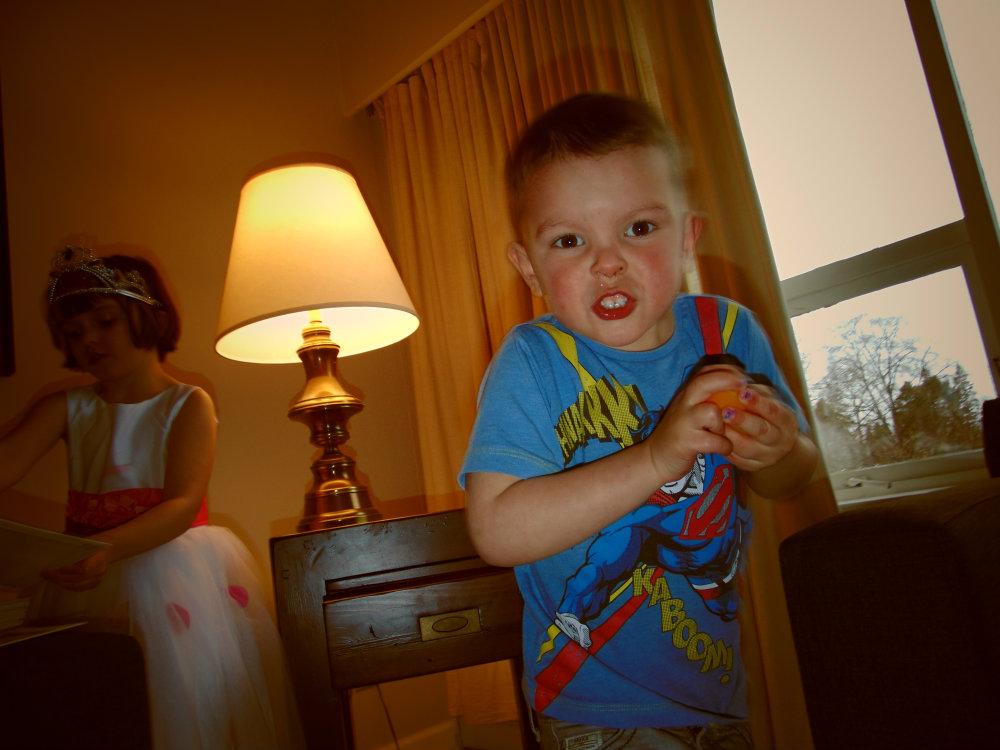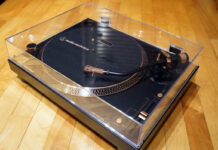 I’ve had the good fortune to review some really fine cameras on the Best Buy Plugin Blog. Cameras with lots of controls and options which allow me to do the kind of things I’m used to doing with my professional camera. As a point-and-shoot the Sony DSC-H300 is a much more basic camera, and at first I was kind of disappointed by all the things it didn’t have. But when I realized that, despite the DSLR-style body, this a really a budget camera, I hit the metaphorical reset button on my expectations. And I realized, once again, that in photography limitations are wonderful things because they limit the number of things we need to think about, and can even help us to find a signature style in our work.
I’ve had the good fortune to review some really fine cameras on the Best Buy Plugin Blog. Cameras with lots of controls and options which allow me to do the kind of things I’m used to doing with my professional camera. As a point-and-shoot the Sony DSC-H300 is a much more basic camera, and at first I was kind of disappointed by all the things it didn’t have. But when I realized that, despite the DSLR-style body, this a really a budget camera, I hit the metaphorical reset button on my expectations. And I realized, once again, that in photography limitations are wonderful things because they limit the number of things we need to think about, and can even help us to find a signature style in our work.
But first of all let’s talk about the key selling feature of the H300 – the incredible optical zoom. It’s described as a 35x (’35 times’) zoom, which doesn’t tell you much, but when you actually move through that entire range, it’s kind of mind-blowing. Take a look at the photos below taken at either extreme…


The difficulty of shooting with very long zooms is that they’re prone to camera shake, which means you need to use a tripod to keep your camera steady. However, the H300 is a point and shoot so it’s aimed at the casual photographer interested in travelling light and grabbing a few snapshots here and there. The solution is Optical SteadyShot which compensates for camera movements and promises a sharper image. But is it any good? Well, I took the second image both hand-held and on the tripod, and I couldn’t tell the difference, so yes I would say the SteadyShot is very effective. This image may not do justice to what the H300 is capable of in terms of sharpness and detail. You’ll notice that the lines of the buildings are a bit wiggly, which I think is actually caused by the air between my and those distant buildings, which are about 4 miles away! Here’s an in-between photo which I liked better:
Here’s an in-between photo which I liked better:

As you can see, landscapes aren’t my strong point!
One of the first things that struck me about the Sony DSC H300 is the ergonomics – it feels solid and it sits really nicely in your hand. It’s very easy to operate one-handed, provided of course that you’re right-handed! [It never really occurred to me before but photography is very much biased towards right handers – I’ve never seen a camera designed for the left-handed. I guess the economics of mass manufacturing militate against it. I wonder is this a niche that 3D printing could address in years to come?]
Generally you’ll see photographers holding their cameras with both hands. Most cameras actually require both hands, one for support (and maybe focussing manually), and the other to operate the shutter button and a few other controls. I think that most photographers like to use both hands, in part because you feel more focussed, more deliberate, when both hands are engaged. It’s a bit like the viewfinder issue I’ve discussed in the past. Most photographers will say that they need to get their eye to a viewfinder (rather than using the LCD screen) In order to get into the photographic ‘mindset’. But working one-handed allows you to be much looser in your approach, and while the results are a little more hit-and-miss, but when it hits, the results can be really impressive.
The H300 has a few creative modes and the one I instantly gravitated towards was the ‘Toy Camera’ mode. Toy cameras are very cheap and cheaply-made film cameras like Holgas and Dianes, which produce a kind of ‘lo-fi’ image, which is really distinctive. There’s a few different colour hues to choose from with the Toy Camera mode, and I went for the warm. I set the mode to manual, popped the flash and suddenly I found the H300’s sweet spot!

 One area where I felt the H300 was weak was in capturing action photos. It does have a continuous mode, but it would only shoot two photos at a time for me, and the gap between the images was way too long. I also found it really difficult to get my moving subject in focus. So even though that big zoom seems great for shooting sports, the performance of the processor doesn’t seem to be able to back it up.
One area where I felt the H300 was weak was in capturing action photos. It does have a continuous mode, but it would only shoot two photos at a time for me, and the gap between the images was way too long. I also found it really difficult to get my moving subject in focus. So even though that big zoom seems great for shooting sports, the performance of the processor doesn’t seem to be able to back it up.
Among the additional features included is the ‘Smile Detection’ mode which actually takes a photo as soon as your subject smiles, which actually worked exactly as descibed! I can’t help thinking we’re taking automatic mode to unnecessary level here though, I’m pretty sure most users will have the wherewithal to manage pressing the shuuter button!
You can also do a little retouching on your portraits right there on the camera. You can adjust the skin tone, do some skin smoothing, shine reduction, and also whiten teeth. I think with the right photo it might work quite well, but I won’t show you the photo that my 5 year old daughter took of me that I attempted to edit! The camera does also keep a copy of the original photo so you can do a before and after comparison.
The LCD screen on the back is nice and big, 3″ wide and great for reviewing images on the fly. I really like to go through my images when I have a few spare minutes and cull some of the duds, and the H300 is great for doing this, with that big screen and also because you can delete multiple images at a time.
The H300 comes with a ‘Scene Selection’ mode which allows you to choose from a range of different scenarios, including ‘Snow’, ‘Fireworks’, ‘Gourmet’ and ‘Pet’. You just pick the mode and the camera will automatically choose the most appropriate settings.
Another interesting feature is that the H300 accepts AA batteries, which is really handy if you’re travelling for example.
All in all, despite early reservations, I really enjoyed shooting with the Sony DSC-H300 and I was able to make some cool and unique images that I wouldn’t have made with a more advanced camera. And it’s great value for money. This camera would be a great present for a budding young phtographer.
Some specs:
- Sensor Type: Super HAD CCD sensor
- Sensor Size: 1/2.3 type (7.76mm)
- Effective Pixels: Approx. 20.1 Megapixels
- Lens F Number: F3.0(W) – 5.9(T)
- Focal Length (35mm conversion): f= 25 – 875mm



